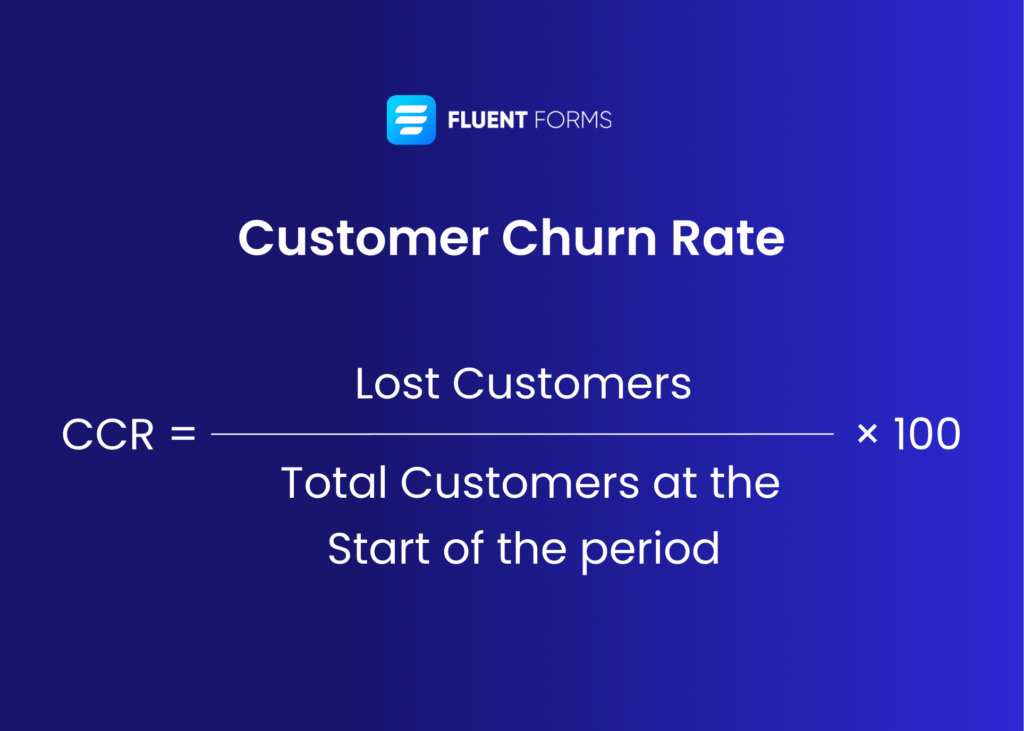6 Strategies to Reduce Customer Churn Rate for Small Businesses

Customer churn is one of the most unpleasant words for any business. What will businesses do without customers? Can you imagine a business with zero customers? Customer churns can give you nightmares.
Your customers will inevitably churn. But how many of them, that is the question. Because you can’t irradicate churn completely but at least mitigate them. Most of the eCommerce and SaaS businesses suffer from customer churns. But still, they manage to survive by taking proper measures.
In this guide, we’ll walk you through the reasons for customer churn and the strategies you can follow to mitigate it. Also, ways to predict and analyze your churn are covered here. So, if you want to save your small business’s future from customer churn, let’s get started.
What is the customer churn rate?
Customer churn means your customers leaving your business. When your customer simply ends the relationship with you, that’s churn.
Customer churn rate is the percentage of customers lost during a given period. For eCommerce, it refers to the failure of your business to make a repeat purchase by a customer. For SaaS, customers canceling their subscriptions is churn.
Does customer churn matter?
Churn might be a small word but it matters a lot. A huge customer churn can break your business. It’s an inevitable part of business.
Identifying customer churn can help a business secure its future. As you can’t stop churning, you should take steps to mitigate its harm. So it’s important to know when customers are churning, if the rate increasing or not. Knowing this helps you make a better strategy.
Common reasons for customer churn for small businesses
Lack of quality product/service
Maintaining consistent quality is a challenge for small businesses. This leads to customer dissatisfaction and ultimately churn. If customers don’t receive their expected value from a product or service, they switch.
A small bakery may experience customer churn if its pastries consistently lack freshness or taste. Customers may opt to purchase from a competitor offering higher-quality baked goods.
Ensuring quality products or services is vital for small businesses to retain customers and foster loyalty. Small businesses can build trust and satisfaction by consistently delivering on their promises and meeting customer expectations. It’s effective in reducing the likelihood of churn.
Poor customer experience
Poor customer experience is a common reason for customer churn in small businesses. Customers who feel unappreciated, ignored, or mistreated, are more likely to take their business elsewhere.
For example, a small boutique may lose customers if its staff are unfriendly or unhelpful. Customers may feel unwelcome and choose to shop at a competitor where they receive better service.
Providing exceptional customer service can help your small business retain customers and minimize churn. You have to listen to your customer feedback, address their concerns, and go the extra mile to meet customer needs. Only then your satisfied customers will keep coming back.
Poor user experience
User experience plays a significant role in customer retention. Small businesses with websites or online platforms must ensure a seamless and intuitive user experience to retain customers.
If your website has a complicated checkout process or slow loading times; it may frustrate customers. It drives them to shop elsewhere.
Investing in user experience design and optimizing digital touchpoints enhances customer satisfaction and loyalty. Make it easy for your customers to find what they need. Keep the transactions smooth. With a good user experience the customers will always remember you.
Lack of engagement
Customer engagement is necessary for building relationships and fostering loyalty. Many small businesses struggle to engage with their customer base effectively. When customers feel neglected or uninvolved, they may lose interest in your business and seek alternatives elsewhere.
A small cafe may experience customer churn if it fails to interact with patrons beyond simply taking orders and serving food. Then its customers look for places where they feel valued and engaged.
Create opportunities for meaningful interactions. You can host events, solicit feedback, or maintain an active social media presence to increase engagement and reduce customer churn.
Failure to adapt
The market is dynamic. It is rapidly evolving every day. That’s why the ability to adapt to changing market conditions and customer preferences is crucial. Many small businesses struggle to adapt to the dynamics, leading to inactivity and eventual churn.
A small retail store may experience declining sales if it fails to update its product offerings to meet shifting consumer trends.
As a small business, you must continuously monitor market dynamics, and stay informed about industry developments. Always be willing to pivot their strategies when necessary. Be responsive to changes, and you can stay relevant and competitive.
How to calculate customer churn
Select a time period over which you want to calculate the customer churn rate. Now divide the number of ‘Lost Customers’ during this time by the number of ‘Total Customers’ at the start of the period and multiply them by 100.

You can use the following Customer Churn Rate Calculator to find your churn rate.
7 strategies to reduce customer churn rate
1. Listen to your customers
Listening to your customers goes beyond just hearing their words. It involves understanding their needs, preferences, and pain points. Actively solicit feedback through various channels. Conduct feedback surveys, check reviews, and communicate directly if possible. Pay close attention to both positive and negative feedback. Any type of feedback helps you understand where you need to improve.
Don’t hide anything from your customers. Be responsive in your communication with customers. Because communication will make them feel heard. Being proactive helps a lot. So, keep them informed about changes, updates, or issues that may affect their experience with your business. Respond promptly to inquiries, complaints, or suggestions. It demonstrates that you value their input and are committed to addressing their concerns.
2. Provide a smooth customer experience
A smooth and seamless customer experience is essential for encouraging repeat business. Optimize every touchpoint of the customer journey; from initial discovery to after-sales service. Invest in user-friendly website design, intuitive navigation, and responsive customer service.
Keep your product or service consistent and reliable. Make efforts that exceed customer expectations. Address any issues or shortcomings promptly and proactively, demonstrating your commitment to customer satisfaction.
3. Don’t make promises you can’t keep
Customers are aware of the market. They know what can be done or not. Avoid making unrealistic promises or commitments that you cannot fulfill. Instead, set clear expectations and deliver on them consistently. Managing expectations effectively helps to build trust and credibility with your customers.
Communicate openly with your customers about any limitations or constraints your business may face. Your customers are humans, so they’ll understand it. In situations where you can’t fulfill a promise, be honest about it. You can offer alternative solutions or compensation where possible. Demonstrate integrity and reliability in your dealings with customers.
4. Customer churn prediction
Anticipating customer churn is essential for implementing proactive retention strategies. Utilize data analytics and predictive modeling techniques to identify behavioral patterns and indicators that signal potential attrition. Analyze historical data and monitor customer engagement metrics, these help you develop predictive models that forecast churn likelihood for any customer.
Monitor customer engagement and satisfaction levels closely. This allows you to detect signs of disengagement or dissatisfaction early on. Provide personalized offers, incentives, or loyalty rewards, to re-engage at-risk customers and reinforce their loyalty to your business.
Use advanced analytics tools and technologies to automate churn prediction processes. Generate real-time insights. This way you can identify at-risk customers early and intervene with targeted retention efforts. Thus you can prevent churn before it occurs and preserve valuable customer relationships.
5. Ask why they churn
Try to find the reasons behind customer churn. Understanding the reasons is essential for implementing effective retention strategies. Conduct exit interviews or surveys to gather feedback from departing customers about their reasons for leaving. You can give them an email, apologizing and also asking for the reasons. Encourage honest responses by assuring customers that their feedback will be used constructively to improve the business.
Analyze the feedback collected from churned customers to identify common themes or patterns. Look for recurring issues or pain points that may be contributing to customer attrition. This helps you gain an insight into the root causes of churn. Find the causes and resolve them as soon as possible.
6. Learn from the mistakes
Every instance of customer churn presents an opportunity for learning and improvement. Reflect on past cases of churn and identify areas where your business may have fallen short. Look for opportunities to make meaningful changes or enhancements to your products, services, or processes based on these insights.
Involve your team in the process of learning from mistakes and implementing improvements. Encourage open communication and collaboration. The engagements generate innovative ideas for addressing customer concerns and enhancing the overall customer experience. Keep learning continuously and adapt based on past mistakes. Thus you can strengthen your business and reduce the likelihood of future churn.
How to perform customer churn analysis
Only implementing a customer churn reduction strategy can’t do anything alone. You need to analyze your customer churn first and then take action. Performing customer churn analysis involves several key steps:
1. Data Gathering: Gather relevant data about customer interactions and behaviors, including purchase history, engagement frequency, feedback, and demographic information.
2. Churn Criteria Definition: Define churn criteria specific to the business context, such as customers who haven’t made a purchase within a certain time frame or have stopped engaging with the business altogether.
3. Customer Segmentation: Segment the customer base based on defined churn criteria to identify high-risk segments showing signs of potential churn.
4. Statistical Analysis: Apply statistical analysis techniques to identify patterns and factors contributing to churn. This involves analyzing correlations between churn and various customer attributes or behaviors.
5. Predictive Modeling: Utilize predictive modeling techniques, such as machine learning algorithms, to forecast future churn likelihood for individual customers. These models help prioritize retention efforts and allocate resources effectively.
6. Monitoring and Adjustment: Regularly monitor churn metrics and trends over time to track performance and assess the effectiveness of retention strategies. Adjust strategies as needed based on analysis findings and customer feedback.
By following these steps, small businesses can effectively analyze customer churn and implement targeted retention strategies to mitigate customer attrition.
Wrap up
That was it. We tried to cover most of the simple yet powerful strategies to reduce customer churn. The market keeps evolving, and so do your customers. Never let your focus off your customers. Keep learning about them, understanding them can give you an edge over your competitors. As you’re a small business you have the advantage of connecting them personally.
You also need to focus on a solid customer retention strategy. Because this can save you from the harmful effects of customer churn.
Let us know your thoughts on customer churn in the comments below.







Leave a Reply